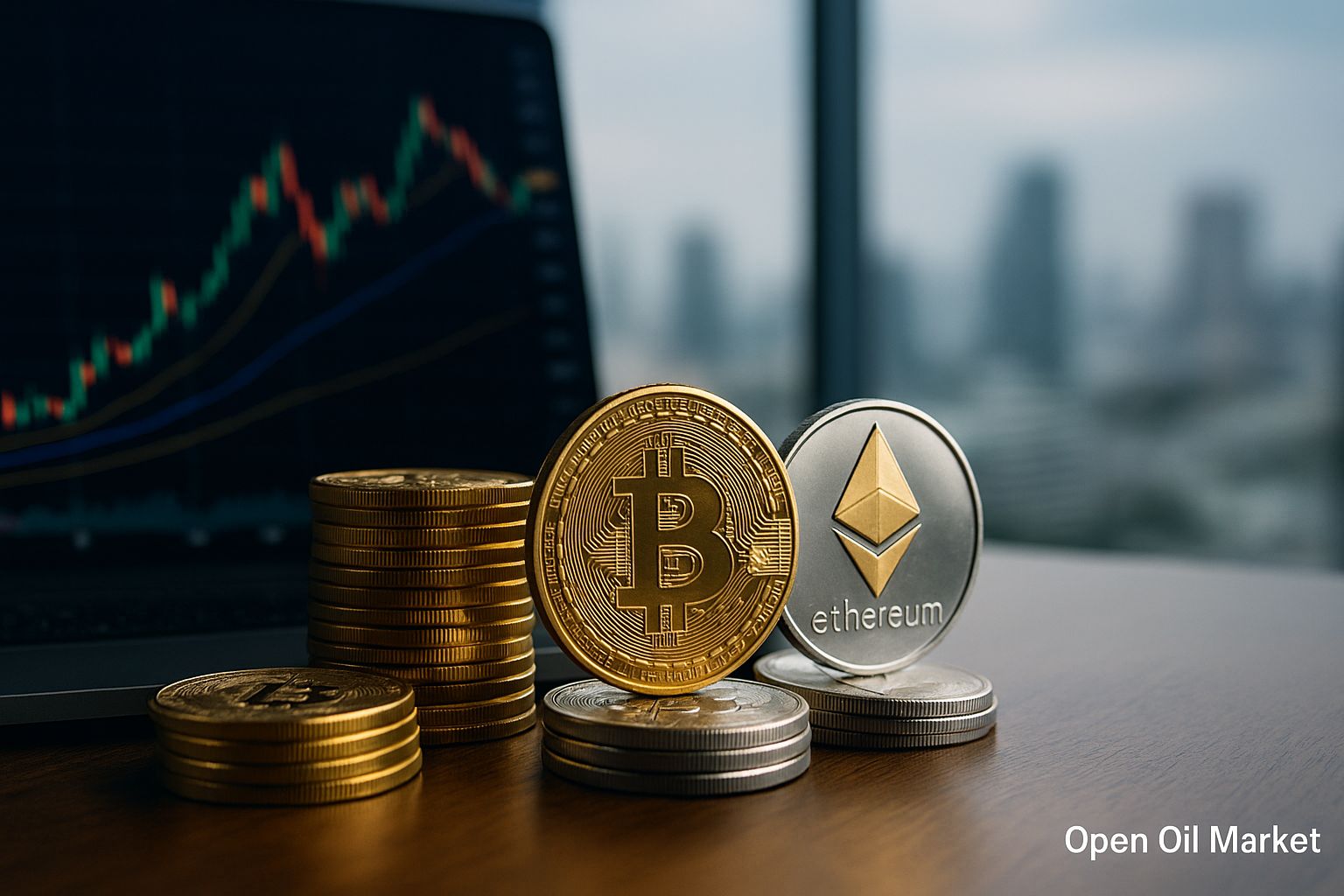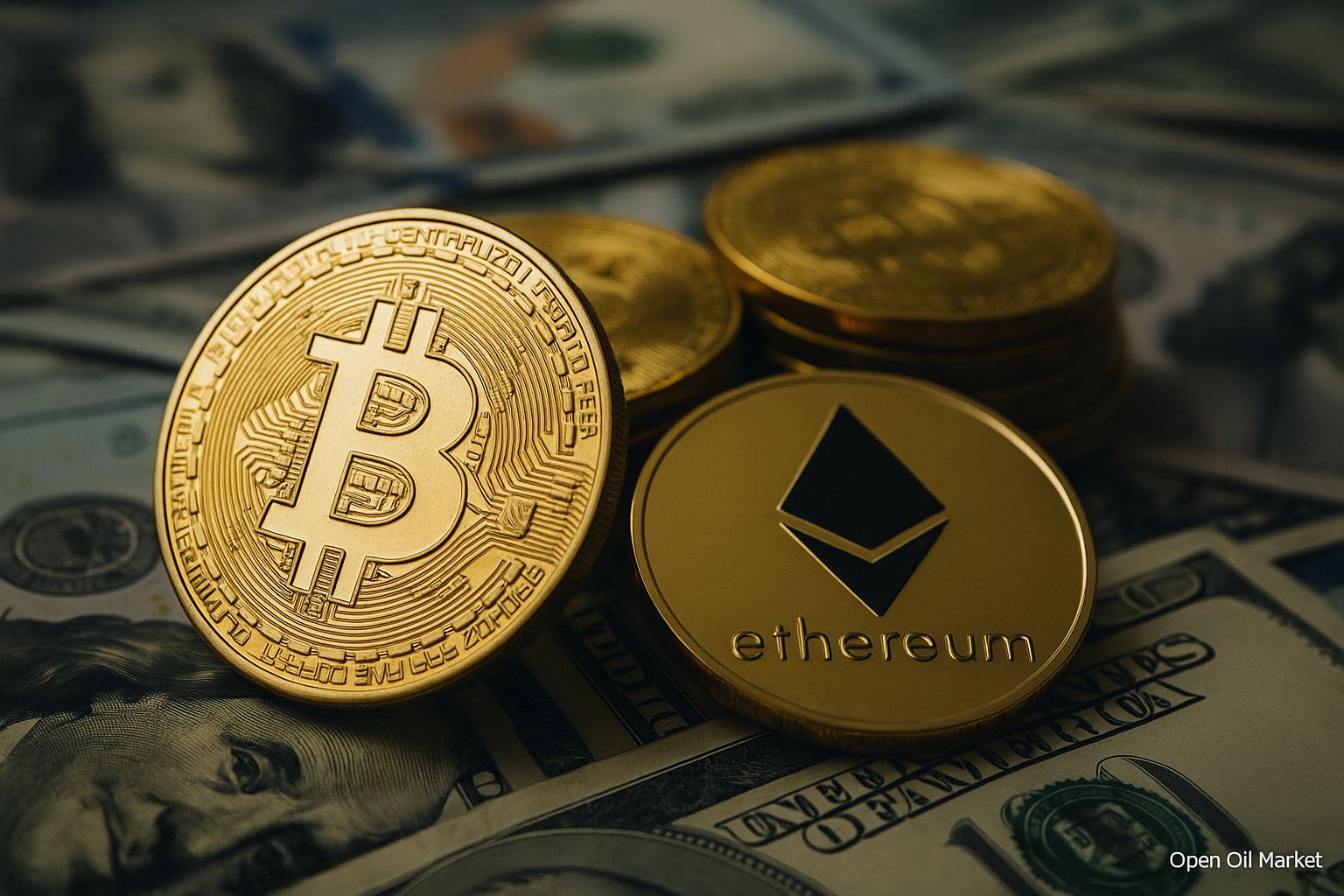
Current Cryptocurrency News for Thursday, November 20, 2025. Bitcoin maintains its position above $90,000; Ethereum and the top 10 altcoins exhibit mixed dynamics. Analysis of key trends and investor expectations.
As of the morning of November 20, 2025, the global cryptocurrency market is striving for stability after recent volatility and correction. Bitcoin, which previously dropped to a seven-month low below $90,000, is now holding steady at approximately $90–92,000, signaling attempts at stabilization. The total cryptocurrency market capitalization stands at around $3 trillion, and investor sentiment remains cautious. Participants' attention has shifted to external factors, with key macroeconomic data releases on the horizon and potential regulatory decisions that could influence the market's future direction.
Bitcoin: Searching for Support After the Correction
The flagship cryptocurrency Bitcoin (BTC) has experienced a swift rise followed by an equally sharp decline this autumn. In early October, BTC reached an all-time high of approximately $126,000, after which a correction ensued amid profit-taking and liquidation of over-leveraged margin positions. By mid-November, the price fell to around $90,000 (its lowest since April), nullifying the annual growth. In recent days, the decline has stabilized: Bitcoin is now consolidating in the $90–95,000 range, trying to maintain itself above $90,000. Some analysts view the current decline as a healthy correction and a precursor to a new rally, while others warn of the risk of further declines under adverse macro conditions. If BTC can hold this critical level, it might pave the way for a resurgence of the upward trend by the year's end.
Ethereum and Altcoins: Varied Dynamics
The second-largest cryptocurrency by market capitalization, Ethereum (ETH), has also felt market pressure. After a summer surge to approximately $3,900, ETH's price has retreated to below $3,100 but has since partially recovered and is currently around $3,000. Interest in Ethereum is buoyed by the development of its decentralized applications (DeFi, NFT) ecosystem and anticipation of an upcoming network upgrade that could enhance its performance and lower transaction fees. Besides ETH, the dynamics of other top altcoins remain varied. XRP soared above $3 in the fall following news of Ripple's victory over the SEC and the launch of ETFs, but has since retreated to around $2.2, retaining its position among the leaders due to institutional interest. The Solana (SOL) platform attracted significant investments, raising its price to approximately $150 before correction; Solana remains in the top 10 thanks to its high network speed and an increasing number of projects. Other coins in the top 10 have also retreated from recent highs. Some niche tokens have shown brief price spikes followed by sharp pullbacks, highlighting the importance of careful risk management.
Institutional Interest and Traditional Capital
Major financial players are sending mixed signals. Following a summer influx of capital, some investors began to take profits this autumn, leading to outflows from several crypto funds. Nevertheless, institutional interest remains: new products are emerging, such as the recent launch of the first spot ETF for XRP in the U.S., with funds for Ethereum anticipated. The traditional financial sector is engaging more actively with the crypto industry. Several banks are launching crypto services, and cryptocurrency firms are receiving substantial investments from Wall Street. For example, SoFi Bank has opened access to cryptocurrency trading for its clients, while Kraken has raised approximately $800 million in investments, boosting its valuation to $20 billion. These steps reinforce the link between traditional finance and the crypto market, increasing trust in digital assets.
Regulatory Environment: Course Toward Order
Regulatory bodies worldwide continue to establish rules for dealing with cryptocurrencies, making the industry more transparent and comprehensible for investors. Here are some trends:
- U.S.: Regulators are easing their approach toward the crypto industry. Legislation on digital assets is progressing in Congress, and the SEC has removed cryptocurrencies from its focus in its 2026 priority plan, which may signal a reduction in pressure. Additionally, discussions are underway regarding allowing cryptocurrencies to be included in 401(k) retirement plans, indicating a gradual integration of crypto assets into the traditional financial system.
- Europe: The EU is implementing the Markets in Crypto-Assets (MiCA) regulation, establishing uniform rules for crypto firms across the Union. Dozens of companies have already obtained licenses under the new requirements, enhancing exchange transparency and investor protection. Stablecoins, exchanges, and DeFi platforms now operate within a clearer legal framework.
- Asia: Hong Kong has legalized retail trading of major cryptocurrencies through licensed exchanges, aiming to become a crypto hub. Singapore and the UAE continue to implement friendly regimes for blockchain businesses, attracting projects and capital. Meanwhile, mainland China maintains a ban on crypto trading, focusing on its own digital yuan.
Macroeconomic Factors and Market Impact
The macroeconomic environment remains a key factor for cryptocurrencies. Recent statements from U.S. Federal Reserve leaders have been "hawkish": inflation is not declining quickly enough, and high interest rates will persist longer than expected. This dampens appetite for risk and puts pressure on Bitcoin and altcoins. Investors are cautiously awaiting new economic data releases from the U.S. (including the employment report on November 20) for hints regarding the Fed's future actions. Generally, the correlation between the crypto market and stock markets has intensified: any macroeconomic shocks or, conversely, policy easing immediately impact digital asset prices. Signals of policy easing or improved geopolitical conditions may restore demand for cryptocurrencies, while further tightening will maintain a cautious stance.
Top 10 Most Popular Cryptocurrencies
As of the morning of November 20, 2025, the following assets comprise the top ten largest cryptocurrencies by market capitalization:
- Bitcoin (BTC) — The largest cryptocurrency (~60% of the market) priced around $90,000; the main market benchmark and "digital gold" for investors.
- Ethereum (ETH) — The second largest by market capitalization (~12% of the market), priced around $3,000. A foundational platform for DeFi and NFTs, regularly updated to enhance efficiency.
- Tether (USDT) — The leading stablecoin pegged to the U.S. dollar at a 1:1 ratio. Widely used on exchanges for trading, providing market liquidity.
- Binance Coin (BNB) — The token of the largest exchange, Binance (on the BNB Chain). Used for fees and DeFi services within the Binance ecosystem, remaining in the top 5 due to its broad applicability.
- XRP — A token for instant cross-border payments. Strengthened after Ripple's victory over the SEC and the ETF launch; currently priced above $2.
- Solana (SOL) — A high-speed blockchain with low fees. Attracted large investments, elevating SOL to around $140; remains in the top 10 due to its growing ecosystem.
- Cardano (ADA) — A smart contract platform with a scientific approach to development. A strong community keeps ADA in the top 10, although the price has dropped below $1 following correction.
- Dogecoin (DOGE) — The most well-known meme cryptocurrency. Supported by its community, DOGE remains among the market leaders, although it is highly volatile.
- Tron (TRX) — A platform with low fees, popular for hosting stablecoins and dApps. Demand in Asia helps TRX maintain its position in the top ten.
- USD Coin (USDC) — The second-largest stablecoin from Circle, fully backed by the U.S. dollar. Widely used by institutions and in DeFi as a reliable digital dollar.
Outlook and Expectations
As we approach the end of 2025, the cryptocurrency market balances between caution and hope for a resurgence in growth. Analysts believe that a combination of factors is necessary for a new rally: a softer macroeconomic backdrop (slowing inflation and signals for interest rate reductions), continued inflow of institutional investments, and strengthened trust through clear regulation. If these factors manifest, the end of the year and the beginning of 2026 may herald a revival in trading and new highs. Otherwise, the market is likely to remain volatile and move within a sideways range.
Currently, investor sentiment remains cautiously patient, yet panic selling is not observed. The presence of interest from major players and the absence of mass panic suggest that this current correction may be temporary. Cryptocurrencies have repeatedly demonstrated their capacity to quickly recover after downturns. Market participants are closely monitoring external triggers: strong economic reports, regulatory easings, or technological breakthroughs could reinvigorate bullish momentum. Thus, the end of November unfolds in an atmosphere of cautious optimism, as the market awaits signals from beyond that will define its trajectory in the coming months.




